R Dargue
Metabolism and Effects on Endogenous Metabolism of Paracetamol (Acetaminophen) in a Porcine Model of Liver Failure
Dargue, R; Zia, R; Lau, C; Nicholls, A W; Dare, T O; Lee, K C L; Jalan, R; Coen, M; Wilson, I D
Authors
R Zia
C Lau
A W Nicholls
T O Dare
K C L Lee
R Jalan
M Coen
I D Wilson
Abstract
The metabolic fate, toxicity and effects on endogenous metabolism of paracetamol (acetaminophen, APAP) in 22 female Landrace cross large white pigs were evaluated in a model of acute liver failure (ALF). Anaesthetized pigs were initially dosed at 250 mg/kg via an oroduodenal tube with APAP serum concentrations maintained above 300 mg/L using maintenance doses of 0.5-4g/h until ALF. Studies were undertaken to determine both the metabolic fate of APAP and its effects on the endogenous metabolic phenotype of ALF in using 1H NMR spectroscopy. Increased concentrations of citrate combined with pre-ALF increases in circulating lactate, pyruvate and alanine in plasma suggest mitochondrial dysfunction and a switch in hepatic energy metabolism to glycolysis in response to APAP treatment. A specific liquid chromatography-tandem mass spectrometry assay was used to quantify APAP and metabolites. The major circulating and urinary metabolite of APAP was the phenolic glucuronide (APAP-G), followed by p-aminophenol glucuronide (PAP-G) formed from N-deacetylated APAP. The PAP produced by N-deacetylation was the likely cause of the methaemoglobinemia and kidney toxicity observed in this, and previous, studies in the pig. The phenolic sulfate of APAP, and the glutathione-derived metabolites of the drug were only found as minor components (with the cysteinyl conjugate detected but not the mercapturate). Given its low sulfation, combined with significant capacity for N-deacetylation the pig may represent a poor translational model for toxicology studies for compounds undergoing significant metabolism by sulfation, or which contain amide bonds which when hydrolysed to unmask an aniline lead to toxicity. However, the pig may provide a useful model where extensive amide hydrolysis is seen for drugs or environmental chemicals in humans, but not in e.g., the rat and dog which are the pre-clinical species normally employed for safety assessment.
Citation
Dargue, R., Zia, R., Lau, C., Nicholls, A. W., Dare, T. O., Lee, K. C. L., Jalan, R., Coen, M., & Wilson, I. D. (2020). Metabolism and Effects on Endogenous Metabolism of Paracetamol (Acetaminophen) in a Porcine Model of Liver Failure. Toxicological Sciences, https://doi.org/10.1093/toxsci/kfaa023
| Journal Article Type | Article |
|---|---|
| Acceptance Date | Feb 4, 2020 |
| Publication Date | Feb 15, 2020 |
| Deposit Date | Feb 25, 2020 |
| Publicly Available Date | Feb 25, 2020 |
| Journal | Toxicological Sciences |
| Print ISSN | 1096-6080 |
| Electronic ISSN | 1096-0929 |
| Publisher | Oxford University Press |
| Peer Reviewed | Peer Reviewed |
| DOI | https://doi.org/10.1093/toxsci/kfaa023 |
| Public URL | https://rvc-repository.worktribe.com/output/1378592 |
Files
12574_Metabolism-and-Effects-on-Endogenous-Metabolism-of-Paracetamol-Acetaminophen-in-a-Porcine-Model-of-Liver-Failure_Accepted.pdf
(570 Kb)
PDF
You might also like
Cholecystectomy in 23 cats (2005‐2021)
(2021)
Journal Article
Downloadable Citations
About RVC Repository
Administrator e-mail: publicationsrepos@rvc.ac.uk
This application uses the following open-source libraries:
SheetJS Community Edition
Apache License Version 2.0 (http://www.apache.org/licenses/)
PDF.js
Apache License Version 2.0 (http://www.apache.org/licenses/)
Font Awesome
SIL OFL 1.1 (http://scripts.sil.org/OFL)
MIT License (http://opensource.org/licenses/mit-license.html)
CC BY 3.0 ( http://creativecommons.org/licenses/by/3.0/)
Powered by Worktribe © 2025
Advanced Search
